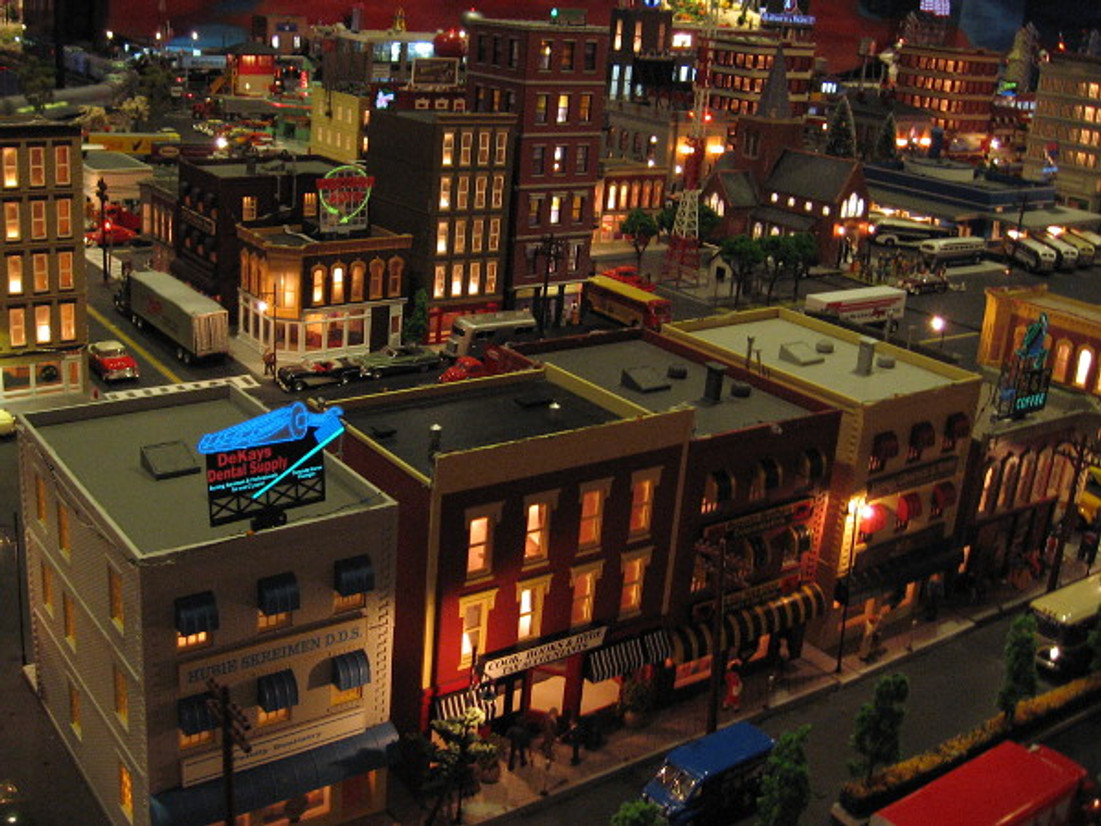Introduction to Realistic Model Railroading: Understanding the Importance of Historical Accuracy
Welcome to "Crafting Realism: A Journey into Historically Accurate Model Railroading." This series aims to guide model railroaders through the fascinating process of creating layouts that not only capture the essence of historical eras but also reflect the intricate details of real-world railroads.
Model railroading has been a beloved hobby for generations, captivating enthusiasts with its intricate landscapes and miniature locomotives. While the hobby itself may be a form of escapism, many model railroaders find joy in recreating realistic and historically accurate layouts. In this article, we'll delve into the world of realistic model railroading and explore the significance of historical accuracy in creating truly immersive and authentic miniature railroads.
Model railroading is an art that combines precision, creativity, and a passion for history. In this series, we will delve into the various aspects of crafting realistic and historically accurate model railroads, from the initial research and planning stages to the final touches that bring a layout to life.
Whether you're a seasoned model railroader looking to enhance your skills or a newcomer eager to embark on a journey into the world of historical accuracy, this series is designed to provide valuable insights, practical tips, and inspiration. Join us as we explore the art of replicating the past in miniature form and bring history to life through the artistry of model railroading.
The Allure of Realistic Model Railroading
Model railroading is more than just assembling tracks and running trains; it's an art form that allows hobbyists to express their creativity and attention to detail. Realistic model railroading takes this passion a step further by focusing on authenticity, capturing the essence of actual railroads and their historical contexts.
The allure of realistic model railroading lies in the ability to transport both the modeler and viewers to a different time and place. By meticulously recreating landscapes, structures, and trains from specific eras, enthusiasts can relive the past and share the beauty of historical railroads with others.
Historical Accuracy: A Nod to the Past
Historical accuracy in model railroading involves careful research and dedication to replicating the details of a particular time period. This commitment extends to the types of locomotives, rolling stock, architecture, and even the surrounding scenery. By paying close attention to historical accuracy, model railroaders honor the legacy of the railroads they seek to emulate.
One of the key benefits of prioritizing historical accuracy is the educational aspect of the hobby. Model railroaders often become amateur historians, gaining insights into the technological advancements, architectural styles, and cultural nuances of a specific era. This immersion in history not only enhances the modeling experience but also fosters a deeper appreciation for the evolution of rail transportation.
Research and Documentation
Achieving historical accuracy in model railroading requires thorough research and documentation. Modelers often consult historical photographs, maps, and documents to accurately recreate the layout, structures, and rolling stock of a chosen time period. This attention to detail ensures that every element of the model railroad reflects the historical reality it seeks to portray.
Additionally, networking with fellow model railroaders, historical societies, and railroad enthusiasts can provide valuable insights and resources. Collaborating with experts and enthusiasts who share a passion for historical accuracy can enhance the accuracy and authenticity of the model railroad.
Challenges and Rewards
While the pursuit of historical accuracy in model railroading is rewarding, it also presents challenges. Sourcing accurate model kits, decals, and accessories from specific time periods can be a daunting task. Modelers may need to engage in kitbashing—modifying existing models—or even scratch-building to achieve the desired level of authenticity.
However, the satisfaction of overcoming these challenges and witnessing a historically accurate model railroad come to life is unparalleled. The sense of accomplishment and the admiration from fellow enthusiasts make the effort worthwhile.
Conclusion
Realistic model railroading is a unique blend of art, history, and craftsmanship. By prioritizing historical accuracy, model railroaders not only create visually stunning layouts but also preserve and celebrate the rich heritage of railroads. The dedication to authenticity fosters a sense of connection to the past, making model railroading more than just a hobby—it becomes a form of time travel, allowing enthusiasts to experience and share the magic of bygone eras. Whether you're a seasoned model railroader or a newcomer to the hobby, embracing historical accuracy adds a layer of depth and meaning to the miniature worlds you create on your model railroad.
Photo: O Scale Layout Old Town Model Railroad Depot San Diego
Recent Posts
-
Prototype Spotlight: GE ES44AC — Modeling a Modern Freight Workhorse
Prototype Spotlight: GE ES44AC — Modeling a Modern Freight Workhorse Published 2025-09-29• 8–10 min
-
How to Build a Realistic Freight Yard: Flow, Trackwork, and Car Management
How to Build a Realistic Freight Yard: Flow, Trackwork, and Car Management Published 2025-09-25 • 8
-
Scenery Basics: From Foam to Foliage — A Quick, Budget-Friendly Guide | Midwest Model Railroad
Modeling Tutorial Scenery Basics: From Foam to Foliage Published 2025-09-23 · 7–9 minute read Li




